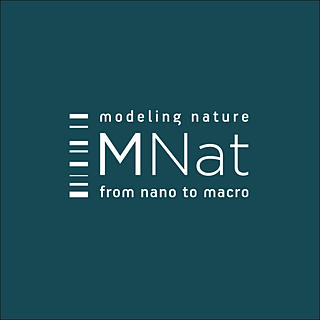MNat PhD School: Patterns in Life and Social Sciences
- Mnat Modeling Nature
- Jun 4, 2019
- 2 min read
En Granada del 13 al 19 de junio de 2019.
Minicourses (June 13-14): Facultad de Ciencias. Workshop (June 17-19): Fundación Euroárabe.
Presentación: La formación de patrones en la vida y las ciencias sociales, la economía o la ingeniería es algo con lo que convivimos a diario y hace que la naturaleza nos muestre un orden interno y una organización muy especializada. Las bandadas de aves que se autoorganizan para migrar, el tráfico, la evacuación de grandes concentraciones de individuos, los grupos en redes sociales o ecológicas, los desarrollos económicos, la morfogénesis y la biología del desarrollo, los frentes singulares o simplemente por qué somos como somos, son solo algunos ejemplos de patrones que nos rodean. Proponemos revisar algunos temas candentes de estas teorías a través de Minicursos especializados: “Advanced courses in Biomathematics & Life Sciences” (13-14 de junio) y un Workshop: “Patterns in Life and Social Sciences” (17-19 de junio).
Programa:
Workshop (June 17-19)
• Tomás Alarcón, CRM-Barcelona (Spain): Multiscale modelling of complex endothelial cell dynamics in tumour-induced angiogenesis.
• Nicola Bellomo, P. Torino (Italy): Critical Patterns in Social Crowds Dynamics.
• Henri Berestycki, EHESS-Paris (France): Predators-prey model with competition.
• Vincent Calvez, U. Lyon (France): A quantitative genetics model with sexual mode of reproduction in the regime of small variance.
• Juan Campos, U Granada (Spain): Pattern formation in Keller-Segel models with flux-saturated mechanisms.
• José M. Gómez, EEZA-CSIC (Spain): A simple general model to assess continuous variation in the outcome of ecological interactions.
• Isabel Guerrero, CBM-CSIC (Spain): The cytoneme connection model for directed long distance Hedgehog signalling during development.
• Seung Yeal Ha, Seoul National University (Korea): Emergent dynamics of flocking models with internal variables.
• Miguel Ángel Herrero, U. Complutense Madrid (Spain): Homeostasis: an emerging law for cell populations.
• Taoufik Hmidi, U. Rennes (France): Non-homoegenous relative equilibria in geophysical flows.
• Pierre-Emmanuel Jabin, U. Maryland (USA): Mean field limits for multi-agent systems with singular interactions.
• Shigeru Kondo, Osaka U. (Japan): Two types of mathematical models explaining the complex biological phenomena.
• Philip Maini, U. Oxford (UK): Modelling collective cell movement: applications in developmental biology and disease.
• Benoît Perthame, Sorbonne U. (France): Mathematical models of living tissues and the Hele-Shaw limit.
• David Poyato, U Granada (Spain): Mean field limits and clustering behavior in the Kuramoto model with singular couplings.
• Eitan Tadmor, U. Maryland (USA): Emerging patterns with short-range interactions.
• Guy Theraulaz, U. Paul Sabatier-CNRS (France): Modeling three-dimensional stigmergic construction in ant colonies.
• Giuseppe Toscani, U. Pavia (Italy): Human behavior and log-normal distribution
Minicourses: Advanced courses in Biomathematics & Life Sciences (June 13-14).
• Tomás Alarcón, CRM-Barcelona (Spain): An introduction to the mathematical modelling of epigenetics.
• Vincent Calvez, U. Lyon (France): Asymptotic methods in evolutionary biology
• Miguel Ángel Herrero, U. Complutense Madrid (Spain): Populations, decisions, algorithms: 1. Immune response: emergent properties resulting from individual decisions 2. The advantages of knowledge: model - driven vaccine design 3. The algorithmic nature of bone remodeling
• Christina Surulescu, TU Kaiserslautern: Mathematical modeling of cancer invasion: The influence of the tumor microenvironment

































Comments